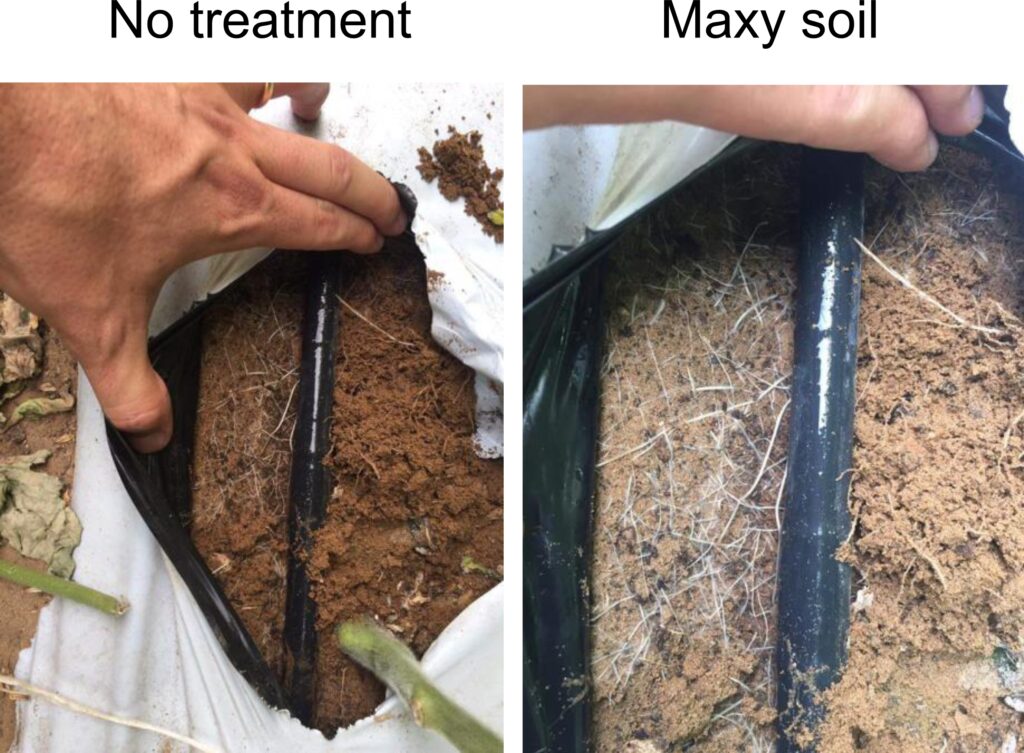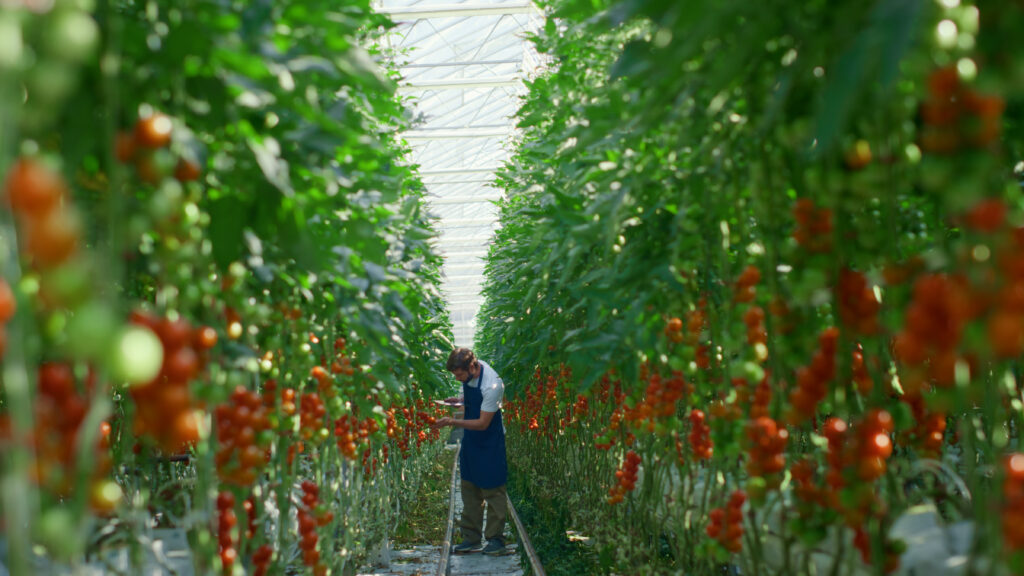characteristics
MAXY SOIL improves soil vitality by increasing the population of useful microflora in situation of soil fatigue. It can be used in both integrated and organic farming programs, mainly in high production systems where fumigants are being. MAXY SOIL provides decomposition of organic elements, mobilization and solubilization of phosphorus and calcium salts, and root bio-stimulation. This interaction between soil, microorganisms and plant in the rhizosphere leads to an increased adsorption from the root system and enhanced plant biomass.

Mode of Application
When drip irrigation is available, MAXY SOIL is normally applied in pre- or post-transplant of the crop, using at least 500 L water/Ha.
In greenhouse and open field vegetable, use 5-10 kg/Ha, 50% in pre-transplant – 50% in post-transplant. In greenhouse Baby leaf, use 5 kg/Ha at sowing.
In field situation such as orchards and vineyards, MAXY SOIL should be applied in the transplanting hole at transplant, use 3-5 kg/Ha. In case of potatoes, it should be applied in furrow at sowing, use 3 kg/Ha.
MAXY SOIL can be mixed with manure or compost prior to being dumped and incorporated in the field, use 0.5-1 kg/m3
In nursery, MAXY SOIL should be applied by aspersion: use 0.2-1 kg/1000m2 seed-tray, or mixed with growing media for transplanting/potting: use 1-3 kg/m3 substrate on account of plant size.
Warning
Store at temperatures between 4° C and 30° C. Administer in the cooler hours of the day on irrigated soil.
Do not mix with fungicide products. Do not mix with non-organic fertilisers. Keep solution pH between 6 and 6.8.
Read label and MSDS carefully before use.
